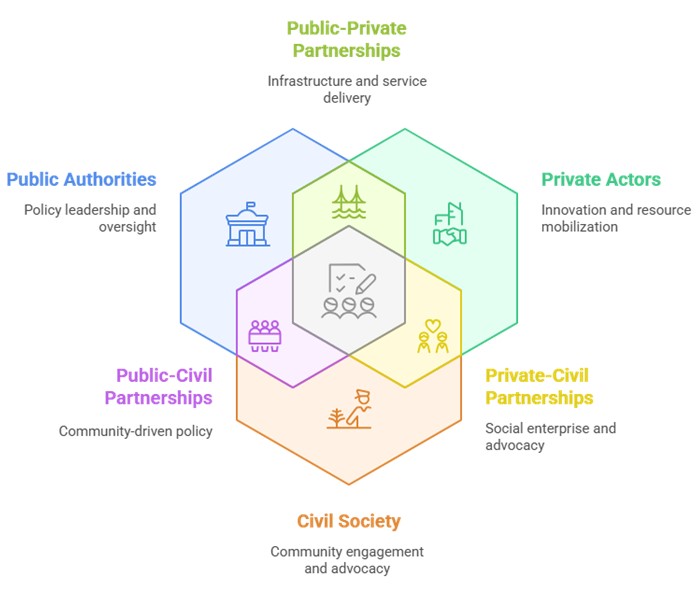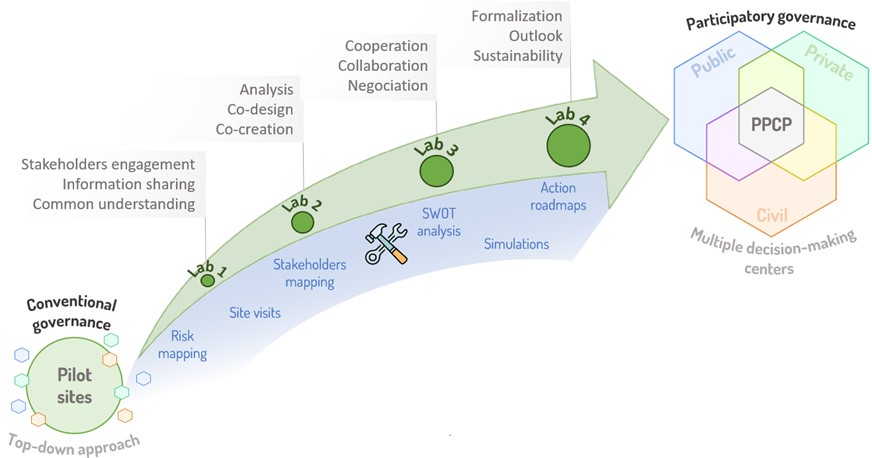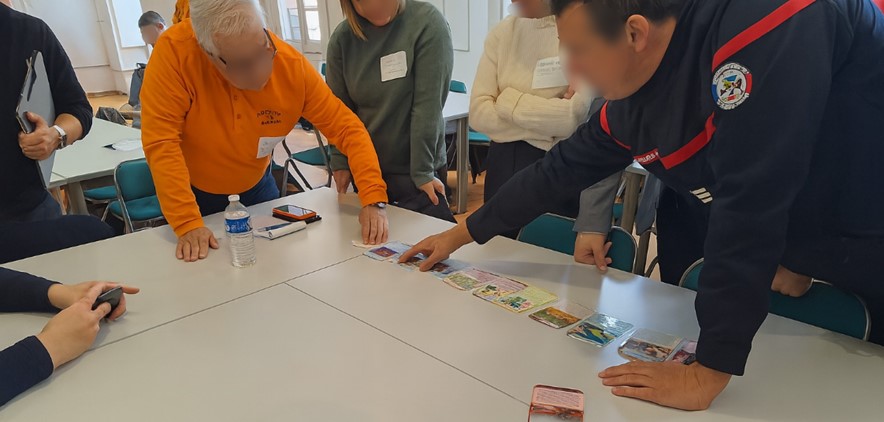Towards participatory governance of climate risks through public–private–civil society partnerships
How can public–private–civil partnerships (PPCP) improve the effectiveness of disaster risk management?
Natural disasters, exacerbated by climate change, are becoming more frequent and severe, putting conventional governance models under strain. Traditional top-down approaches often fall short in engaging local stakeholders or designing solutions adapted to each context. The PPCP approach offers a fresh alternative by bringing together public authorities, private actors, and civil society in structured collaboration. Through co-creation and shared ownership, PPCP help communities identify vulnerabilities, set priorities, and develop solutions tailored to their realities. This participatory dynamic fosters trust, accountability, and collective commitment, which are key ingredients for building lasting resilience.
The following diagram illustrates the interactions among the three main sectors at the heart of PPCP, and the types of partnerships they can develop together.

Figure 1 – Typology of collaborative partnerships in the PPCP approach
What are the main principles behind the PPCP approach?
The PPCP is structured around two main pillars. First, a tripartite engagement that ensures that that authorities, private actors, and civil society organizations all play an active role. Second, it relies on regularly organized PPCP Labs: workshops for dialogue, collaboration, and co-creation. Alongside these core principles, the approach values simple and accessible participatory tools, iterative learning, and inclusive practices that enable every participant to contribute meaningfully.
How is the PPCP implemented in practice?
Implementation typically follows three stages.
The first step is a scoping phase, with a mapping of local governance systems and identification of the stakeholders who need to be involved.
During the second step, a series of Labs is organized: they consist in structured workshops during which participants analyze natural risks, explore management scenarios, and co-design concrete actions to be implemented locally to strengthen prevention and reduce impacts. Inspired by methods such as Living Labs and Design Thinking, these workshops use creative tools like mapping exercises, simulations, and prototyping to encourage dialogue and engagement.
The third stage focuses on capitalization and evaluation: documenting outcomes, gathering feedback, and exploring how to integrate results into formal prevention and management plans and budgets.
The following diagram illustrates the shift in governance that the PPCP aims to drive—from top-down approaches with weak stakeholder connections to participatory governance where actors form a network of multiple decision-making centers. Each Lab pursues specific objectives and relies on a participatory co-creation toolkit.

Figure 2 – Transition from conventional to participatory governance through PPCP: Labs (green dots), respective objectives (grey) and co-creation toolbox (blue)
Developed by Artelia for the Horizon Europe project C2IMPRESS (grant n°101074004), PPCP has already been tested in several pilot areas (Greece, Portugal, Spain, Turkey). These experiences have shown that the approach effectively strengthens cross-sector dialogue, generates locally grounded knowledge, and builds momentum for collaborative governance. While it has achieved tangible results, the approach is still in its early stages and faces several challenges, among which:
- Effectively engaging the private sector and civil society, which can prove more difficult than mobilizing public actors
- Navigating and adapting to institutional rigidity and inertia, which often limit local autonomy,
- Ensuring the sustainability of PPCP beyond the duration of the Labs.
What lessons have emerged, and how can they inform future resilience planning?
Experience so far suggests that clear facilitation and thoughtful process design are essential. Aligning PPCP activities with existing policies and legal frameworks helps avoid duplication and strengthens legitimacy. Reaching out early to underrepresented groups, such as small businesses or informal community networks, improves diversity and buy-in. Equally important, securing political support and dedicated resources is critical to ensure co-created actions translate into lasting strategies.
As climate risks grow, participatory approaches like PPCP offer promising ways to make resilience planning more inclusive, adaptive, and grounded in each territory’s realities.
What are the next steps for developing and applying the PPCP?
Following its initial implementation in C2IMPRESS, PPCP entered a new phase as it is rolled out in MED-IREN (grant n°101157707), another project under the European Union’s Horizon Europe research and innovation framework program, focused on nature-based solutions involving nine new case study areas across the European Union (France, Greece, Cyprus, Spain, Italy, Bulgaria, and Finland). This large-scale application will help consolidate lessons learned, adapt the approach to diverse cultural and institutional settings, and strengthen its capacity to address challenges such as heatwaves, coastal risks, and urban flooding.
In parallel, PPCP will be piloted in a third project starting in November, where for the first time citizens will participate directly as individual stakeholders. Selected citizen representatives will join Labs alongside public, private, and civil society actors, opening new opportunities for bottom-up engagement and shared decision-making.
Looking ahead, PPCP is also being explored as a promising methodology for stakeholder engagement in Environmental and Social Impact Assessments. Applying it in this context could help project developers and authorities involve stakeholders more meaningfully in the participatory design of mitigation and adaptation measures for infrastructure projects.

Published on July 15, 2025.
Authors: Juliette Rimlinger, Alexandra Jaumouillé, Catherine Freissinet

